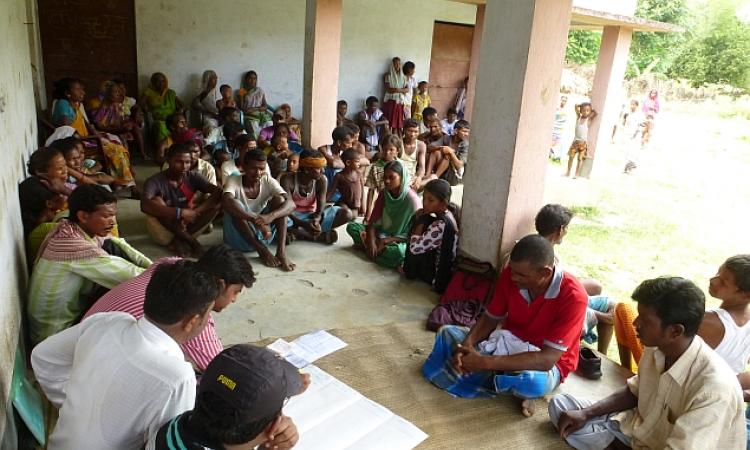
"Clean water", emphasized the woman. "'Close to the house. Whenever it is needed", she added. She was speaking at a village meeting organised to determine what was needed to make the village water secure. The discussions had begun with an attempt to define water security.
The leader of the group sat stunned. It had taken him many moons and many meetings to explain to his peers in both the development and government sectors the concept that a tribal woman with no formal education expressed so succinctly.
It shouldn't have come as a surprise. Security is best understood and articulated by those who lack it.
An area plagued by hardship
The Santhal and Pahadiya tribals of Jharkhand are no strangers to hardship. The people of the forests in Eastern Bihar have been the target of disdain and exploitation for much of their history. Their first mention in written documents appears in the Atharva Veda (V.22.14), as the people of the Anga Kingdom, in a list of 'despised people'. Since then, they have been exploited by the zamindars, the Britishers at the time of the Raj, and always by tradesmen and moneylenders.
Today, they still lag behind the rest of India.
This is often the result of well-meant but poorly informed policies formed without consulting them. Neeraj Kumar of the Society for Advancement in Tribes, Health, Education, Environment (SATHEE), an organisation working in the area, illustrated this by citing the example of the great famine of 1976. This famine caused the death of 30-35 thousand Paharias leading to a drastic drop in their population. The Paharia Welfare Department was set up in response to the famine to address issues of tribal livelihood and food security. However water insecurity, the cause of the famine, was never addressed.
The meeting at Bhawani Chowki gave the women the opportunity to come up with the brilliantly succinct definition of the project. At Mehendi Pul, the residents had a fully detailed plan already in mind. There was an existing borewell, and they wanted a supply system-with filter- for the well.
Outcomes of the meeting
Nearly all the meetings ended with a small bouquet of possible solutions for achieving drinking water security, both in terms of quality and quantity. After the residents proposed the solutions, they visited the sources along with the team and further discussed the feasibility of tapping these sources for drinking water. At the end of the meeting, the walk, and the several discussions that happened during the walk, three or four preferred (and feasible) solutions would be identified for further exploration.
These were then presented to the Department of Drinking Water Supply and Sanitation, Government of Jharkhand. It is expected that the government will assess the schemes and implement the most suitable one. PRIA and SATHEE will continue to support the process.
Lessons learnt
The plans for the six Gram Panchayats selected for the first round were completed in an exhilarating week. The team split up into four or more groups and conducted meetings in two villages each day. This jet-setting schedule was imposed by external factors; a more relaxed schedule will be followed for the rest of the Gram Panchayats. Despite this, a radically innovative plan was implemented successfully and the process provided valuable lessons for the next round.
- Speaking to women is important: Not only did the women have the most accurate and current information about the water sources but they were also eager and ready to speak. The initial effort suggests that this is an area that the team needs to focus on.
- Triangulate!: Triangulation is the process by which an answer to a question is sought from several sources. This is similar to consulting several academic articles for an unbiased view. Door-to-door surveys, or even meetings do not provide this cross-checking. Interactive tools such as those used during a Participatory Rural Appraisal enable several people to answer the same questions, in public, with plenty of space for cross-checking. These need to be used in this endeavour.
- People need to make their own decisions: We all have preconceived notions that we hold dear. For example, the development worker may have a bias towards open wells or some other technology which might work very well in her own area but might not be the best solution in the work area. Even if it is the best solution, it may be better to opt for second-best if that meets the approval of the villagers rather than foist one that they do not trust in. It is tempting to insist on the 'best' solution, but such an insistence is not true to the participatory method.
The first attempt at developing decentralised water security plans along with the villages of Jharkhand yielded hopeful results and some lessons. With these lessons, truly participatory and community-owned water systems in the Gram Panchayats to be worked in can be a reality. And once the tribal villages of Jharkhand experience the immense satisfaction of taking responsibility for their infrastructure, who can tell where it will lead them?